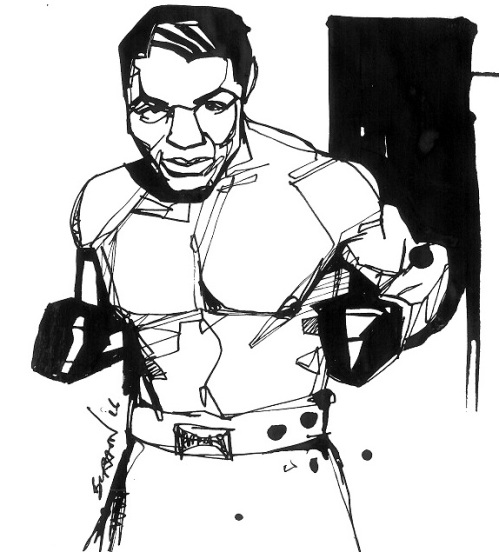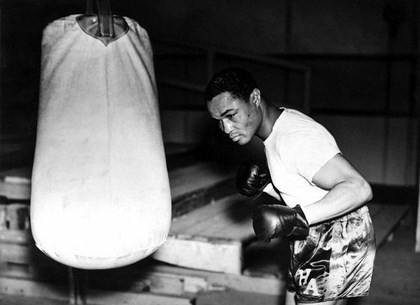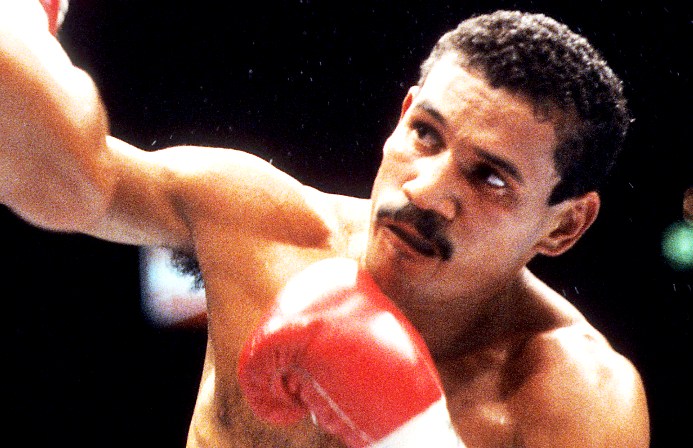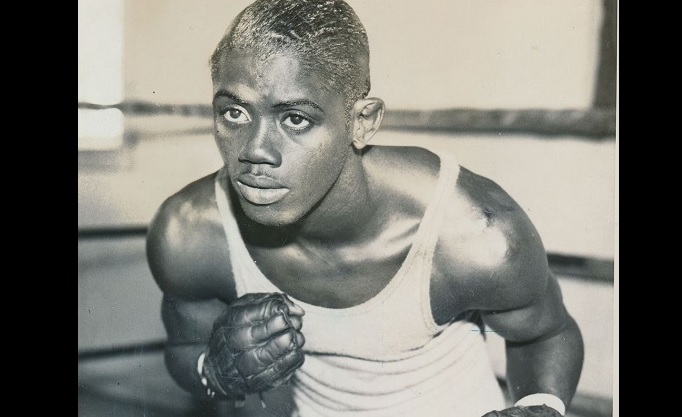On The Greatness Of Homicide Hank
It requires a leap of the imagination to understand how different from today the sport of boxing was in the 1930s. Or how different the society that allowed this brutal sport to assume a central place in its culture. But different they were, in so many ways. The ‘welfare state’ had yet to be invented, same for the Civil Rights movement, and so a young black man with no chance to complete his education or land a decent job might very well dream of seizing some measure of glory and riches with his fists. It no doubt beat riding the rails, aimlessly searching for work during the Great Depression. In Armstrong’s case, there is some literal truth to this. He was working as a railroad hand, barely getting by, when he first had the idea to become a prize-fighter, and he rode the rails from St. Louis, Missouri to California to begin his boxing career in earnest.
At that time, not only did every major city in America have literally hundreds, if not thousands, of boxers toiling away in the many gyms, but every neighbourhood had its own fight club where boxing cards were held on a weekly basis. Add the fact that there were only eight weight divisions (instead of the current 42, or however many exist now), plus the expectation that an active fighter climb into the ring at least once a month (instead of two or three times a year) and the resulting level of competition was something that can scarcely be imagined now. Suffice to say, it was fierce. Which makes the accomplishments of Henry Armstrong something to marvel at. In this furnace of all-out fistic rivalry, Armstrong managed to not only become a world champion, but to become the reigning world champion in three separate weight divisions, featherweight, lightweight, and welterweight, all at the same time. No one had done it before and, thanks in part to a rule passed disallowing the feat, no one has done it since.
Armstrong turned pro in 1931. At just over 5’5″, he was of average height for a featherweight but small for a lightweight or welter. But his fighting style – furiously bobbing and weaving while working to get inside and land hooks to his opponent’s body – turned his shortcomings in height and reach into advantages. They called him “Hurricane Henry” because he never stopped moving forward, never stopped punching, and he set a pace few fighters could handle. The pressure and intensity of his attack was simply too much for most opponents, even those who were naturally bigger and stronger. By 1937, his ferocious whirlwind style had put him in position to make a move for a world title.
But Armstrong’s handlers (one of whom was Al Jolson) had more ambitious plans. The hottest name in boxing at that time was Joe Louis, the world heavyweight champion, and the first black heavyweight champ since Jack Johnson. The rise to the title of the poker-faced, power-punching Louis had captured the imagination of the American public. Thus, something truly remarkable was required for Armstrong to steal some of the limelight. The plan was hatched to have Henry hold three different world titles at the same time, something never done before. It is a testament to Armstrong’s ring greatness that the scheme worked.

The first part of the plan was fulfilled in October of 1937 when Henry challenged Petey Sarron for the world featherweight title, stopping the former Olympian in the sixth round. But winning the title from Sarron was actually only one highlight in what remains arguably the single best year of boxing for any professional fighter, ever. By its end, Armstrong had not only secured a world championship but had added no fewer than 27 victories to his record. That’s a winning bout against a top pro roughly every twelve days. All but one of Hammerin’ Henry’s victories came by way of knockout.
But 1938 was almost as remarkable. First, Armstrong jumped up to welterweight to take on pound-for-pound great Barney Ross and win his second world title by unanimous decision. And then a mere ten weeks later he climbed into the ring to take on another legendary champion, Lou Ambers, for the lightweight crown. Unlike Ross, whose best days were behind him, Ambers gave Henry a tough, bloody battle. Armstrong bled profusely from a torn lip and cuts around both eyes, but hung on to take another 15 round decision.

And so it was that for the first and last time in boxing history, one man held three different world championships at the same time. And take note: no “junior” or “super” championships were involved. From 120 pounds all the way up to 147, Homicide Hank was king. Incredibly, by all reports Armstrong should have extended his reign to the middleweight division. He fought to a draw against champ Ceferino Garcia, but ringsiders agreed the decision should have gone Hammerin’ Henry’s way. Today we marvel at Manny Pacquiao’s amazing feat of eight divisional world championships, but if “junior” weight divisions had been around in Armstrong’s time, he conceivably could have won seven or eight championships himself and held them all at the same time, during an era when the competition was much, much tougher.
Armstrong never defended at featherweight and lost his lightweight crown in a rematch with Ambers. But no doubt he was one of the best welterweight champions in boxing history, defending the title a record 19 times. As might be expected, given the torrid pace Armstrong set for himself, his championship years were relatively few, his prime past him by the time he lost a pair of bouts with Fritzie Zivic in 1940 and ’41. He fought sporadically between then and 1945 before retiring at age 32. His career mark was an extraordinary 152-21-8, with an even 100 knockouts.
In 2007, in a poll ranking the greatest fighters of all-time, pound-for-pound, Ring magazine put Henry Armstrong at number two, second only to the great Sugar Ray Robinson. It’s a ranking that a young kid riding the rails in 1930 could scarcely have dreamed of reaching, but today is difficult for anyone to dispute.
— Michael Carbert







Pingback: Donaire & Cunningham: A Study in Contrasts - The Fight CityThe Fight City